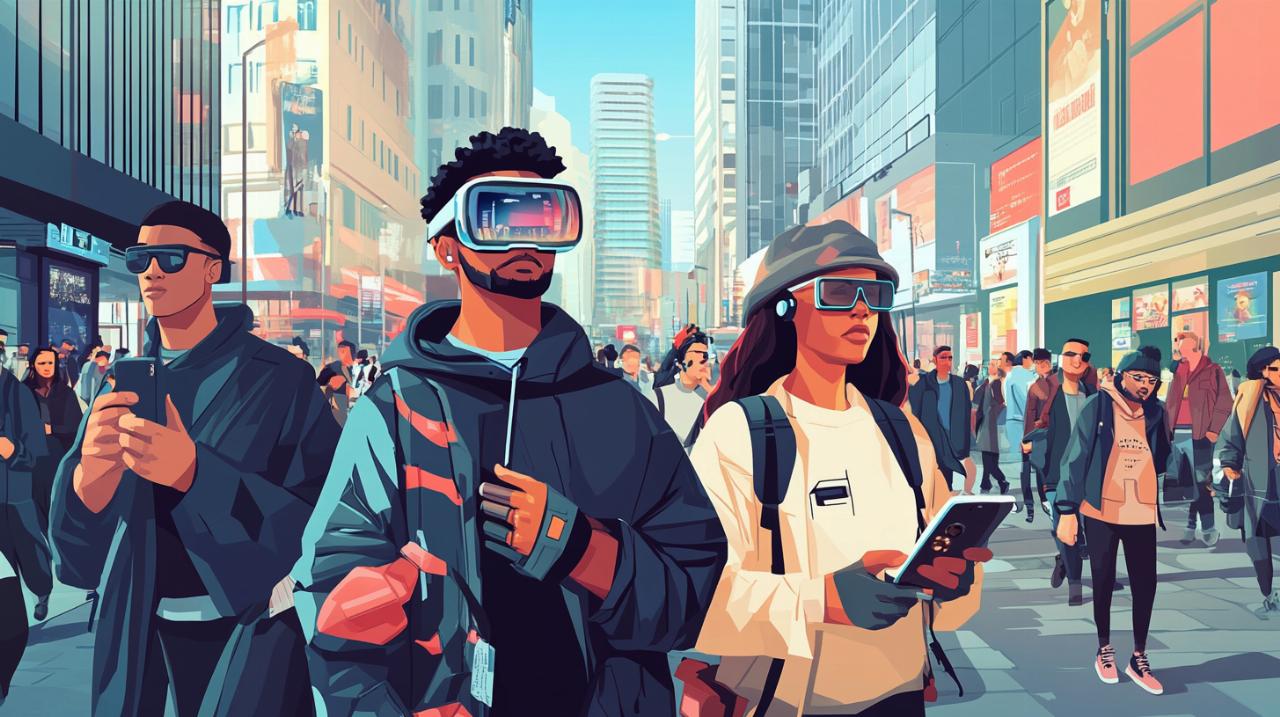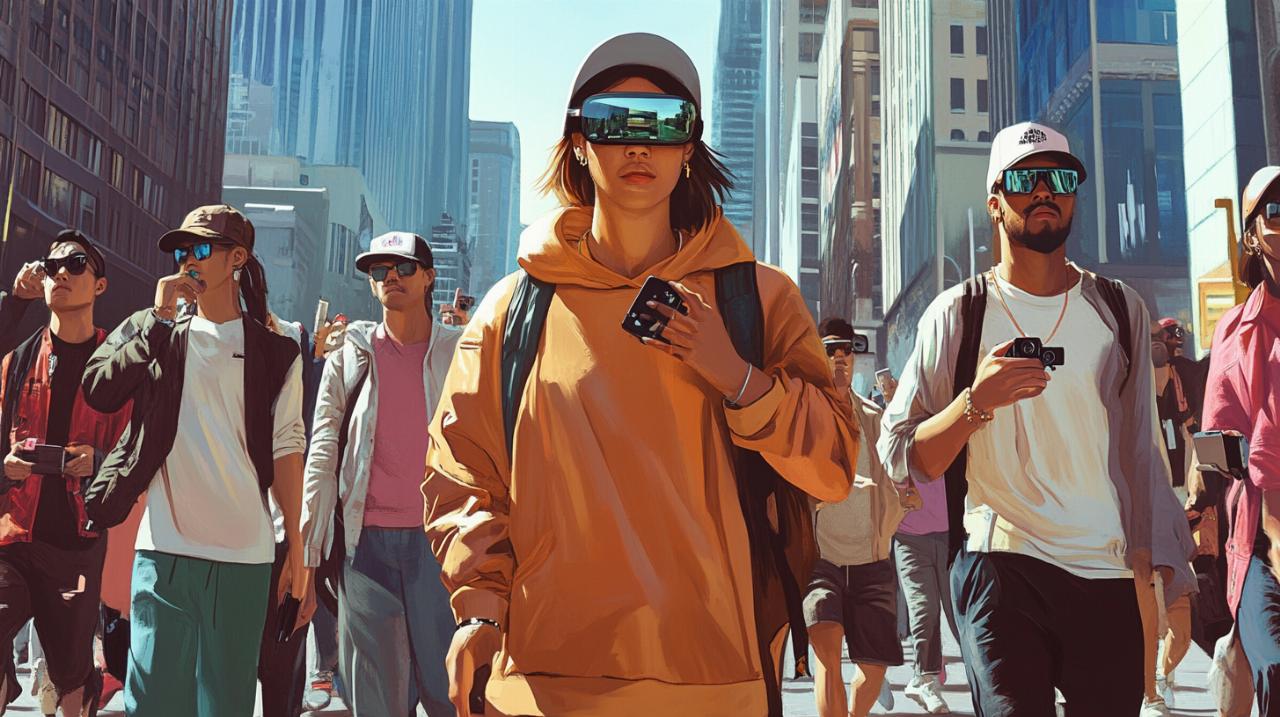The streets of our cities have become vibrant stages where fashion and technology perform an intricate dance, creating a visual language that speaks to both style and innovation. Urban dwellers now navigate their daily lives adorned with gadgets and garments that blur the boundaries between what we wear and what we use, transforming the very fabric of metropolitan existence into something altogether more dynamic and interconnected.
Wearable tech reshaping street style accessories
The transformation of accessories from mere adornments to functional technology has fundamentally altered how urbanites express themselves through fashion. What was once a simple wristwatch has evolved into a sophisticated smartwatch that tracks fitness metrics, manages communications, and serves as a statement piece all at once. These devices have transcended their utilitarian origins to become essential elements of street style, with luxury brands and tech companies alike vying to create products that satisfy both aesthetic sensibilities and practical demands. The sleek curves of a fitness tracker now complement the lines of a tailored jacket just as naturally as a traditional timepiece once did, whilst simultaneously monitoring heart rates and counting steps throughout the bustling city day.
Smartwatches and Fitness Trackers as Fashion Statements
The modern urbanite's wrist has become prime real estate for technology that marries form with function in ways previously unimaginable. Smartwatches have evolved from chunky, overtly technical devices into refined accessories that rival traditional horology in their visual appeal. High fashion houses have recognised this shift, collaborating with technology firms to produce limited editions that appeal to those who refuse to compromise between connectivity and style. Fitness trackers, meanwhile, have shed their purely athletic associations to become everyday accessories, available in materials ranging from industrial-grade polymers to precious metals, ensuring they complement everything from athletic wear to business attire as individuals move through different urban environments.
Audio devices becoming essential style elements
The streets of contemporary cities hum with private soundtracks, as wireless earbuds and headphones have become ubiquitous fixtures of urban fashion. These audio devices have transcended their functional purpose to become markers of personal style, with manufacturers offering designs that range from minimalist elegance to bold statement pieces. The disappearance of tangled cables has liberated fashion from the constraints that once made technology an awkward addition to an outfit, allowing these devices to integrate seamlessly into streetwear aesthetics. Whether nestled discreetly in the ear or worn as over-ear statements in vibrant colours, audio technology now contributes to the overall visual identity of the wearer, signalling both their musical preferences and their technological savviness to fellow urbanites navigating the same concrete landscapes.
Smart clothing and functional fashion innovation
 The very garments that clothe our bodies have become canvases for technological innovation, with designers and engineers collaborating to create apparel that responds to the demands of hyper-connected urban living. This evolution represents more than simple novelty, addressing genuine needs that arise from metropolitan existence where staying powered and visible often determines success in navigating complex social and professional landscapes. The integration of technology directly into fabric represents a fundamental reimagining of what clothing can accomplish beyond protection and aesthetic expression.
The very garments that clothe our bodies have become canvases for technological innovation, with designers and engineers collaborating to create apparel that responds to the demands of hyper-connected urban living. This evolution represents more than simple novelty, addressing genuine needs that arise from metropolitan existence where staying powered and visible often determines success in navigating complex social and professional landscapes. The integration of technology directly into fabric represents a fundamental reimagining of what clothing can accomplish beyond protection and aesthetic expression.
Garments with integrated charging technology
Jackets and coats equipped with built-in charging capabilities have emerged as practical solutions to the perpetual challenge of maintaining battery life throughout demanding urban days. These intelligent garments feature discreetly integrated battery packs and cable management systems that allow wearers to charge their smartphones, tablets, and other devices whilst remaining mobile through city streets. The technology has been refined to the point where it no longer compromises the drape or comfort of the clothing, with lightweight batteries and flexible circuitry woven into linings and pockets. Some innovative designs even incorporate solar panels into shoulder areas or backpack sections, capturing ambient light during commutes to provide supplementary power. This fusion of fashion and functionality speaks to the reality of modern urban life, where connectivity has become as essential as shelter from the elements, and where Tmart electronics and similar providers have helped normalise the expectation that our possessions should work harder for us.
Led-enhanced footwear and illuminated apparel
Footwear and clothing embedded with LED technology have transformed wearers into moving light installations, adding both safety features and dramatic visual impact to urban fashion. Trainers featuring responsive lighting systems that react to movement or sync with music have captured the imagination of street style enthusiasts, particularly within skateboarding culture and nightlife communities where visibility and self-expression converge. Beyond mere aesthetic flourish, these illuminated elements serve practical purposes in dimly lit urban environments, increasing visibility for cyclists, pedestrians, and runners navigating city streets after dark. Designers have expanded this concept beyond footwear into jackets, trousers, and accessories that incorporate electroluminescent panels and programmable LED arrays, allowing wearers to customise patterns and colours through smartphone applications. This innovation represents a democratisation of fashion technology, making previously exclusive concepts accessible to broader audiences whilst simultaneously pushing the boundaries of what we consider clothing to be. The visual spectacle created by these garments transforms ordinary streets into impromptu fashion exhibitions, where technology and textile merge to create new possibilities for self-expression within the urban landscape.

Comments are closed